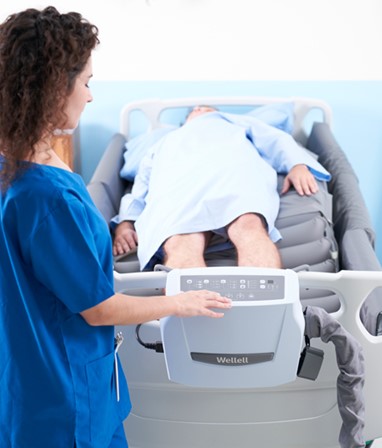Labor-Intensive Workflow Increases Risks of Occupational Injury among Healthcare Workers
Healthcare workers experience one of the highest rates of musculoskeletal disorders worldwide
Healthcare workers play a crucial role in the healthcare system, primarily by providing care and health services to patients. Previous research on hospitals has demonstrated that hospital workers have a higher-than-average incidence rate of injury and illness1. They experience one of the highest rates of musculoskeletal disorders worldwide, with 46% of nursing assistants reporting hurting themselves while lifting, moving or helping a patient and 40% reporting a back injury due to conducting these tasks. Work-related musculoskeletal disorders (MSDs) include injuries or disorders of the muscles, nerves, tendons, joints, cartilage, and spinal discs. For instance, sprains or strains resulting from overexertion in lifting are considered MSDs. Especially, fear of injuries when moving patients with obesity is also a major concern of nurses and may affect an organization’s ability to attract and retain staff 2. Musculoskeletal injuries can significantly impair the care workforce, such as restricting patient coverage, reducing operating hours, and increasing staff turnover 3.
Nurses have an exceptionally high prevalence of musculoskeletal injuries globally4.
。Europe: France 10-50%, Portugal 89%
。Americas: United States 35.1-47%, Brazil 32.8-57.1%
。Asia: China 78.6%, Saudi Arabia 85%, Iran 88%
Optima turn automatically redistributes pressure for different patient contours and improves full-body pressure relief care and comfort through better immersion and envelopment. Caregivers can implement automated turning cycles with customizable frequencies (10,20,30 or 60 minutes) and also angles (10, 20 or 30 degrees). This significantly reduces time and cost of wound care in hospitals. In addition, automated turn feature significantly reduces complexity of patient turn procedure and nursing workload with minimal manual intervention, this is very helpful especially in critical care environment.

- P, D., Michelle A. ;Kissinger,Samuel. (2018, November). Occupational injuries and illnesses among registered nurses : Monthly Labor Review: U.S. Bureau of Labor Statistics. https://www.bls.gov/opub/mlr/2018/article/occupational-injuries-and-illnesses-among-registered-nurses.htm#_edn16
- McClean K, Cross M, Reed S. Risks to Healthcare Organizations and Staff Who Manage Obese (Bariatric) Patients and Use of Obesity Data to Mitigate Risks: A Literature Review. J Multidiscip Healthc. 2021 Mar 8;14:577-588. doi: 10.2147/JMDH.S289676. PMID: 33727820; PMCID: PMC7954428.
- Choi, Sang D. and Brings, Kathryn. ‘Work-related Musculoskeletal Risks Associated with Nurses and Nursing Assistants Handling Overweight and Obese Patients: A Literature Review’. 1 Jan. 2016 : 439 – 448
- Luan, H. D., Hai, N. T., Xanh, P. T., Giang, H. T., Van Thuc, P., Hong, N. M., & Khue, P. M. (2018). Musculoskeletal Disorders Prevalence and Associated Factors among District Hospital Nurses in Haiphong, Vietnam. BioMed research international, 2018, 3162564. httpsdoi.org10.115520183162564

